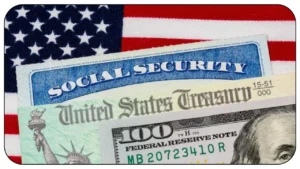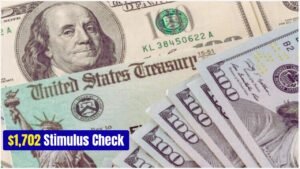Millions of Americans are buzzing about a $2,970 direct deposit expected in July 2025. This payment isn’t a random bonus or a new stimulus check—it’s part of existing federal programs like Social Security, SSI, SSDI, or VA benefits. For many, this money could be a lifeline to cover rising costs like rent, groceries, or medical bills. But not everyone qualifies, and there’s a lot of confusion about what this payment is and how it works. Let’s break it down in simple terms so you know if you’re eligible, how to get the money, and when it might hit your bank account.
What Is the $2,970 Payment?
The $2,970 direct deposit isn’t a one-size-fits-all handout. It’s tied to programs like Supplemental Security Income (SSI), Social Security Disability Insurance (SSDI), Veterans Affairs (VA) benefits, or even tax refunds. For some, it’s a regular monthly payment if their benefits add up to this amount after the 2025 Cost-of-Living Adjustment (COLA). For others, it could be a one-time back payment to fix past underpayments or delays. This money aims to help low-income families, retirees, veterans, or those with disabilities manage everyday expenses. If you’re already enrolled in these programs, you might not need to do anything extra to get it.
Who Qualifies for the Payment?
Not everyone will see this $2,970 deposit. Eligibility depends on the program you’re part of. Here’s a quick look at who might qualify:
|
Group |
Eligibility Criteria |
|---|---|
|
SSI Recipients |
Low-income individuals who are elderly, blind, or disabled. |
|
SSDI Beneficiaries |
People with disabilities who have enough work credits and high lifetime earnings. |
|
VA Beneficiaries |
Veterans receiving disability compensation, especially at higher levels. |
|
Low-Income Retirees |
Retirees with additional federal or state aid that boosts their benefits to $2,970. |
|
Back Pay Cases |
Those owed money from delayed or underpaid benefits in previous months. |
If you fit into one of these groups, check your Social Security or VA account to confirm your status. Income limits and work history play a big role, so make sure your records are up to date.
How to Claim the $2,970 Deposit
Good news: most people won’t need to apply separately. If you’re already getting SSI, SSDI, or VA benefits, the payment should automatically hit your bank account or Direct Express card. For tax refunds, file your 2024 tax return early and include accurate bank details. If you’re not enrolled in direct deposit, you might get a paper check, but this could take a few weeks longer. To avoid delays, log into your My Social Security account or IRS portal to update your banking info. Be cautious of scams—nobody should charge you a fee to get this payment. Always use official sites like ssa.gov or irs.gov.
When Will the Money Arrive?: direct deposit
The payment schedule depends on your benefit type and birthdate. Social Security and SSDI payments follow this calendar for July 2025:
- Born between the 1st and 10th: Second Wednesday (July 9, 2025)
- Born between the 11th and 20th: Third Wednesday (July 16, 2025)
- Born between the 21st and 31st: Fourth Wednesday (July 23, 2025)
- SSI recipients: Typically the 1st of the month (July 1, 2025, or the next business day if it’s a holiday)
Tax refunds or back payments might arrive anytime in July, depending on processing times. Check your bank account regularly, as deposits can take a few business days to show up.
Tips to Avoid Problems
To make sure you get the $2,970 without hiccups, double-check your bank details with the SSA or IRS. If you’ve moved recently, update your address to avoid missing a paper check. Don’t fall for anyone promising to “speed up” your payment for a fee—it’s a scam. If the money doesn’t arrive, contact your local Social Security or VA office. You can also use the IRS’s “Get My Payment” tool (expected to reopen soon) to track your status.
Why This Payment Matters
For many Americans, $2,970 can make a big difference. Whether it’s paying off debt, covering medical costs, or just keeping up with rising prices, this deposit is a chance to get ahead. If you’re eligible, take a moment to plan how you’ll use it—maybe save some for emergencies or pay down high-interest debt. By staying informed and keeping your records updated, you can ensure this financial boost lands in your account smoothly. Check ssa.gov or irs.gov for the latest updates, and share this info with family or friends who might qualify.



